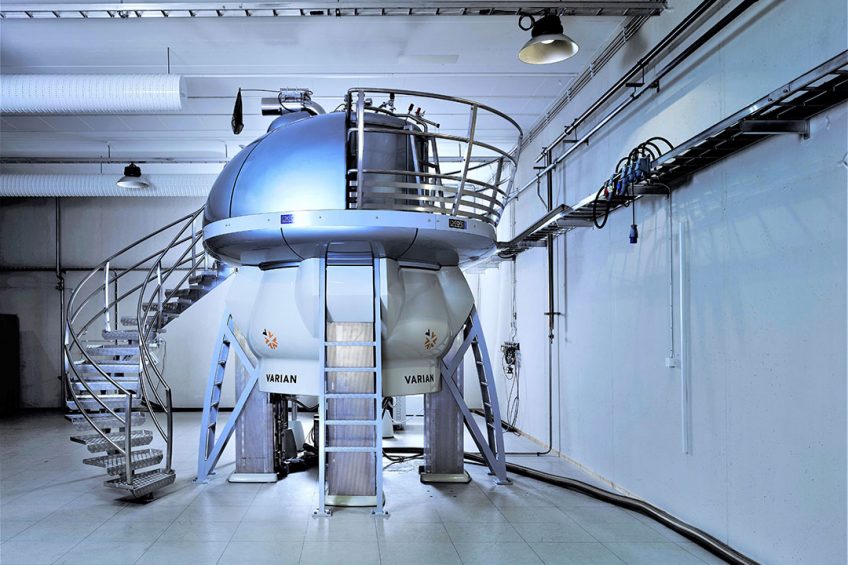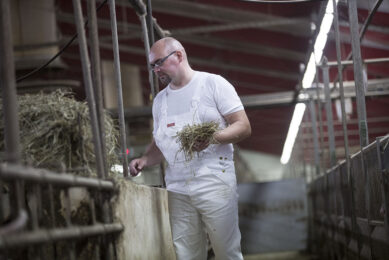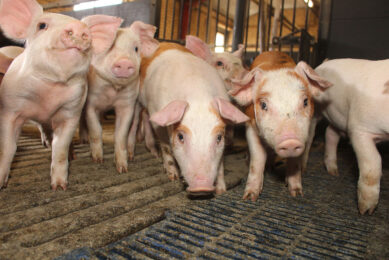Metabolomics: The missing link in genetic selection

Metabolomic selection can improve genetic gain in difficult-to-measure traits by combining whole-metabolomic data with phenotypic, pedigree and genomic data. The metabolome is the complete set of metabolites in a sample and forms a link in the chain between DNA and phenotype.
New breeding technologies such as genomic selection, whole-genome sequencing, optimal contribution selection and gene editing are developing at an increasing pace. Metabolomic selection is an emerging breeding technology based on a new source of information, namely nuclear magnetic resonance (NMR) metabolomics. NMR metabolomics measures all metabolites in a sample from an individual.
That complete set of metabolites – referred to as whole-metabolomic data – is associated with the level of physiological activity in biological pathways that are initiated at DNA level and culminate in trait expression. The level of physiological activity is, in turn, regulated by the genes that an individual has inherited from its parents, as well as by cues from its environment. This link between whole-metabolomic data and inherited genes may be exploited to increase the genetic potential for desirable phenotypic traits, such as feed efficiency and meat quality in pigs.
Increasing the genetic potential
Selective breeding increases the genetic potential of pigs by choosing genetically superior selection candidates as parents of the next generation. The resulting increase in genetic potential – hereafter referred to as genetic gain – is a direct result of the accuracy by which we can predict the breeding values of selection candidates in each generation. The more accurate the breeding values, the higher the probability that we will select the genetically superior candidates, thus resulting in higher genetic gain.
Unfortunately, the accuracy of breeding values is low for the majority of traits in pigs, as well as in other species. The range is 10–40% for most traits, which highlights that we are only realising a small proportion of the genetic gain that is theoretically possible. The main reason is that the information currently used to predict breeding values – phenotypic, pedigree and genomic data – does not adequately describe the genetic potential of the pigs. Other sources of information are clearly needed, and this is where whole-metabolomic data comes into play.
Feed efficiency is an evident trait for which whole-metabolomic data may contribute information that has not yet been exploited
Increasing genetic gain for feed efficiency
Previous research suggests that metabolomic selection can increase genetic gain. For feed efficiency in pigs, the gain could be as much as 25%. Feed efficiency is an evident trait for which whole-metabolomic data may contribute information that has not yet been exploited due to the expense and difficulty in taking accurate measurements at the individual level. In fact, most pig breeding programmes do not record phenotypic feed efficiency information for all selection candidates.
Potential benefits for meat quality
Achieving genetic gain for difficult-to-measure traits is challenging because without accurate phenotypes, the genetic potential of individual animals cannot be estimated for those traits. Metabolomic selection may be of particular benefit for traits such as meat quality, as this is difficult to measure in live selection candidates, and information is typically only available from full- or half-siblings that have been slaughtered.
A joint research project
The DanBred breeding programme is the Danish pig breeding programme with a long and solid history of developing and implementing the newest sophisticated breeding technology. For example, genomic selection, including DNA-testing of all breeding candidates, has been an integral part of the breeding programme since 2010. Now, the company aspires to set the pace for a new form of selection with a joint research project on metabolomic selection in pigs and barley, which kicked off in January 2020.
The research project aims to develop new methods to exploit metabolomics for genetic gain and to evaluate the potential for metabolomic selection in pigs through collaboration with the Danish Pig Research Centre (DPRC), Nordic Seed and Aarhus University (AU). The breeding company specifically aims to increase genetic gain for feed efficiency and meat quality.
The project is partially funded with about € 1.1 million from the Green Development and Demonstration Programme from the Ministry of Environment and Food in Denmark.
Improved feed efficiency and CO2 emission
The additional predicted improvements in feed efficiency and progressive reduction in feed intake will also lead to reduced CO2 emission. This, as with all effects of genetic selection, will be permanent and cumulative across generations – and this will naturally be profitable for pig producers. DanBred calculated that by 2050, the feed-to-growth ratio will be reduced by approximately 0.3 kilogrammes of feed per kg growth – on top of what would be expected when metabolomic selection is not taken into consideration. That would correspond to a cost reduction of approximately € 5.40 per pig and a yearly reduction in CO2 emissions corresponding to 150,000 tonnes of CO2 equivalents.
Meat quality to benefit consumers
Quality of the pork meat is an important aspect for consumers, and meat quality is therefore also an integral part of the project. That is why measuring the levels of intramuscular fat is also a key focus.
Meat quality is traditionally measured in slaughtered animals, which restricts the possibility of measuring phenotypes from a large number of breeding candidates. It is expected that metabolomic selection will contribute essential new knowledge about meat quality in DanBred Duroc, which is in high demand, particularly in Southern Europe. Moreover, it will enable targeted products for markets that have a preference for pork with a specific meat quality.
Whole-metabolomic data
Whole-metabolomic data – or the metabolome – is the full collection or network of metabolites identified at a certain time in a specific tissue or blood sample from an individual. Metabolites are the small molecules that result from metabolic reactions within the body and reflect physiological activity. The metabolome can be measured on a large scale using nuclear magnetic resonance (NMR) spectroscopy. The NMR measurement can be made based on, for example, blood samples from pigs.











